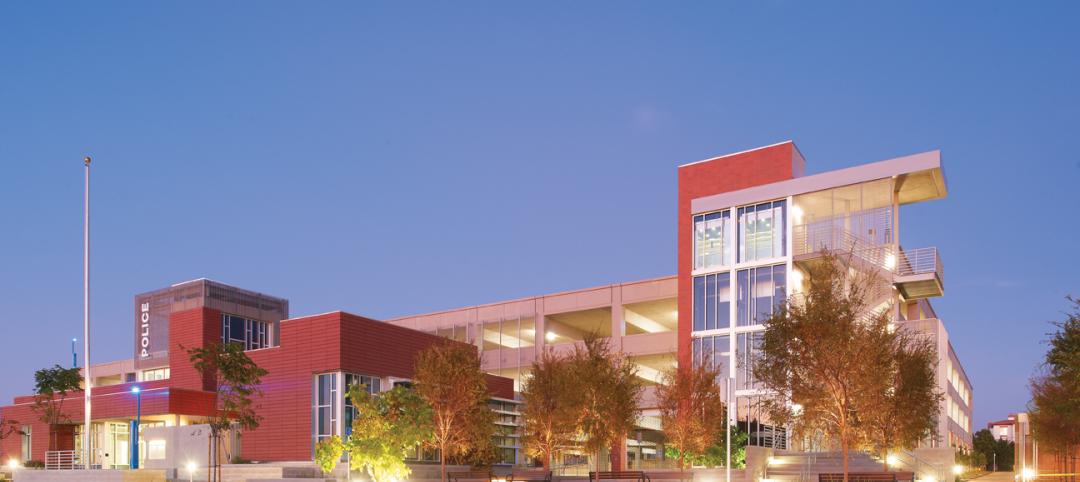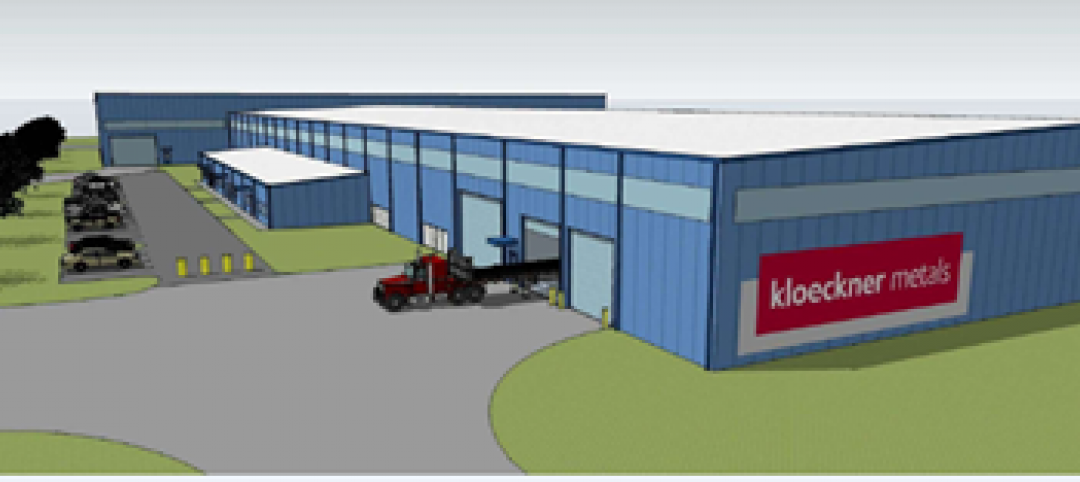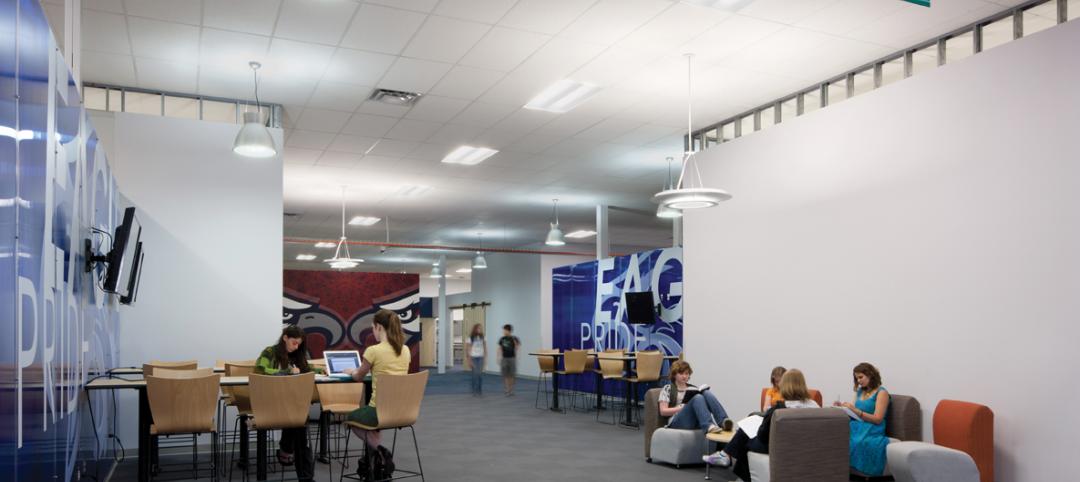More owners and developers are latching onto design-build as a preferred delivery method for projects large and small. And a new paper from FMI, the construction management consultant and investment banking firm, outlines how AEC firms and their clients that enter into such contracts are avoiding stress points that often bog down construction.
Drawing on FMI’s “2018 Design-Build Utilization” report, “the paper, “The Growing World of Design-Build,” written by FMI senior consultant Paul Trombitas, estimates that design-build project delivery will increase by 18% between 2018 and 2021, and comprise 44% of total construction spending, or the equivalent of $1.19 trillion over that four-year span.
A sustained emphasis toward educating owners and project stakeholders on the process and benefits associated with design-build has facilitated continued adoption and greater utilization industrywide. On the public side, increased design-build legislation has helped push the adoption of such projects. On the private side, owners tend to select design-build for unique and challenging projects that require lots of collaboration.
 Design-build is projected to account for 44% of all construction spending for the years 2018 through 2021. Image: FMI
Design-build is projected to account for 44% of all construction spending for the years 2018 through 2021. Image: FMI
Of the various customer segments that use design-build, manufacturing, road infrastructure, and education will represent the greatest percentage of design-build construction spending over the next three years, states FMI.
In addition to larger and more complex projects, design-build continues to expand into project sizes of less than $25 million, as owners continue to gain exposure to the benefits of the delivery method.
However, design-build has its own set of challenges that, according to FMI principal Bill Spragins, revolve around the differing roles assumed by the parties, the number of decisions that must be made simultaneously, and the increased speed of decision-making associated with compression of the design and construction cycle.
For example, a project is potentially set up fail when owners confine their use of this delivery method to procurement without aligning the decision-making and approval processes within the organization to meet scheduling needs. A project can also be derailed by misaligned expectations between the owner and design-builder regarding the level of control that the owner’s team retains over design decisions.
Consequently, for a design-build delivery method to work, specific parameters need to be established about project scope, scheduling, and who’s responsible for what.
FMI states that AEC firms looking to win design-build projects need to think strategically: What slices of the market are they targeting, who are the right customers, what services do they need, and how do these offerings set a firm apart from its competition?

FMI recommends that AEC firms take a customer-focused approach when trying to win design-build contracts. Image: FMI
FMI uses a “4C model” to illustrate the context of profitable growth. Its starts with defining the business “climate” that the AEC firm is operating in—from demographics to regulations—and then digging deeper into possible changes, expectations, and needs of customers
AEC firms need to find out what criteria owners use to select contractors. They also need to weigh their own strengths and weaknesses against competitors’ for a given project.
FMI singles out a number of steps for winning design-build projects:
•Build a compelling story about why your firm is right for the project
•Build a go-to-market strategy that defines customers before an RFP hits the street
•Think like a customer
•Find out what the customer wants and why it’s important.
•Put your time where your strategy is. Build in organizational capacity that’s centered on a key focus, such as spending time with customers in advance.
The paper provides some avenues for minimizing stress points that can arise during a design-build contract. Having early and continued alignment among all project owners and stakeholders can help remove or limit these issues.
Make sure you completely understand requirements or other bidding assumptions, particularly on design-build projects. Of the projects FMI studied, 25% fell victim to this. At times, even the owner won’t understand the true impact of some of the requirements that are written into the contract.
Make sure there are formal internal hand-off meeting(s) between estimating/preconstruction and project management/field operations. This should include subcontractor involvement in planning the work.
Within the design-build arena, public-private partnerships (P3s) have emerged as a way for public and private sector entities to align on the provision of assets and the delivery of services and then effectively manage that partnership. To assemble the most successful P3 project teams, contractors should:
•Build your expertise through strategic joint ventures. Pick your partners carefully.
•Plan comprehensively for project complexities. Be smart about your business decisions.
•Understand the cost and risk barriers to entry. You need deep pockets and a thick skin.
•Have a deep understanding of an owner’s “ecosystem.”
•Start building relationships with public officials and finance representatives now.
•Collaborate and innovate.
Related Stories
| Nov 11, 2012
Greenbuild 2012 Report: Higher Education
More and more colleges and universities see sustainainably designed buildings as a given
| Nov 6, 2012
Uponor files patent infringement suit against Sioux Chief Manufacturing
Uponor is seeking damages and an injunction to prevent Sioux Chief from selling the PowerPEX F1960 Ring with Stop, which it believes violates Uponor’s patent.
| Nov 5, 2012
Brasfield & Gorrie awarded new steel processing facility for Kloeckner Metals
The construction will take place on a 16-acre greenfield site at ThyssenKrupp Industrial Park in Calvert.
| Oct 22, 2012
Tishman appoints Cettina COO of Americas
Tishman Construction Corp. has promoted Ed Cettina to Chief Operation Officer, Americas, for both Tishman and the overall AECOM construction services practice.
| Oct 11, 2012
Hank Adams Named to Lead HDR’s Healthcare Program
With more than 25 years of experience, HDR vice president is tapped to lead firm's healthcare projects.
| Oct 10, 2012
Foster + Partners to Design New 425 Park Avenue Tower
Conceptual designs submitted by Foster, Hadid, Koolhaas and Rogers to be on exhibit during Municipal Art Society’s Annual Symposium
| Oct 9, 2012
AIA Survey shows 40% cut for firms
Total construction spending, which exceeded $1 trillion in 2008, dropped to under $800 million in 2011.
| Oct 9, 2012
AIA billings index sounds a positive note
The so-called new projects index was at a relatively healthy 57.2, up from 56.3 the previous month.
| Oct 5, 2012
2012 Reconstruction Award Special Recognition: Joplin Interim High School, Joplin, Mo.
At 5:41 p.m. CDT on Sunday, May 22, 2011, an EF5 tornado touched down in Joplin, Mo. In the next 31 minutes, the mile-wide, multiple-vortex tornado, with winds up to 250 mph, destroyed two thousand buildings, including Joplin High and nine other schools.
| Oct 5, 2012
2012 Reconstruction Award Bronze Winner: Pomeroy Senior Apartments, Chicago, Ill.
The entire interior of the building was renovated, from the first floor lobby and common areas, to the rooftop spaces. The number of living units was reduced from 120 to 104 to allow for more space per unit and comply with current accessibility requirements.

















